Our Traceability Journey Continues: Expanding to Australia
A key cotton-producing country with a strong track record of innovation and sustainability in agriculture, Australia is the latest step in our traceability journey.
Read moreA key cotton-producing country with a strong track record of innovation and sustainability in agriculture, Australia is the latest step in our traceability journey.
Read moreIn its inaugural meeting, the Multistakeholder Dialogue brought together different sectors to share experiences and challenges to improve sustainability in cotton production.
Read more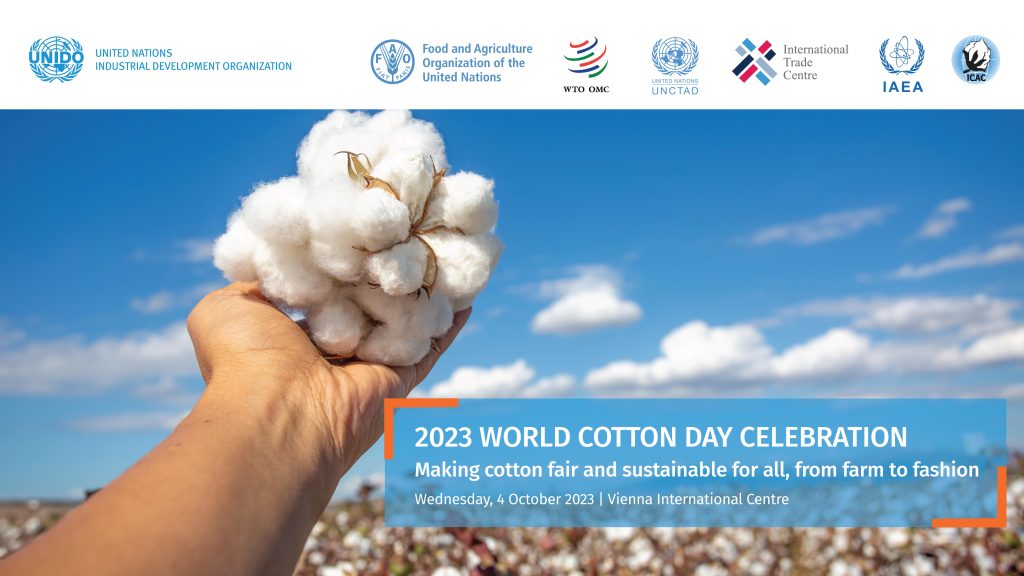
Today we celebrate World Cotton Day 2023, an annual commemoration of one of the world’s most renewable resources and a commodity that supports approximately 100 million families.
At Better Cotton, we’re working every day to support and strengthen cotton growing communities so they can keep growing the crop they rely on. As the world’s largest cotton sustainability initiative, our strategic aims are to embed sustainable farming practices and policies; enhance well-being and economic development; and drive global demand for sustainable cotton. We believe in the power of sustainable cotton to transform livelihoods and the environment.
World Cotton Day was adopted by the United Nations General Assembly in 2021. The annual date is 7 October, but this year is being celebrated on 4 October with a World Cotton Day 2023 event hosted by the United Nations Industrial Development Organization (UNIDO) and the Food and Agriculture Organization of the United Nations (FAO) in Vienna, Austria.
This year’s theme is “Making cotton fair and sustainable for all, from farm to fashion.”
We’re proud to have our own Jacky Broomhead, Senior Traceability Manager, presenting at WCD 2023. She’s discussing ‘Traceability as an innovation for the cotton sector’ – a topic we’ve been focusing on as we prepare to launch our Traceability Solution next month and continue to explore how we can create more opportunity for farmers and the rest of the sector.
We’ve also this week had CEO Alan McClay speak at The Economist’s Sustainability Week in London, participating in a panel called ‘Word on the High Street – Making Fashion and Cosmetics Sustainable.’
This is a movement and not a moment, and we hope everyone – brands and retailers, manufacturers, producers and consumers – will join us and be part of something better.
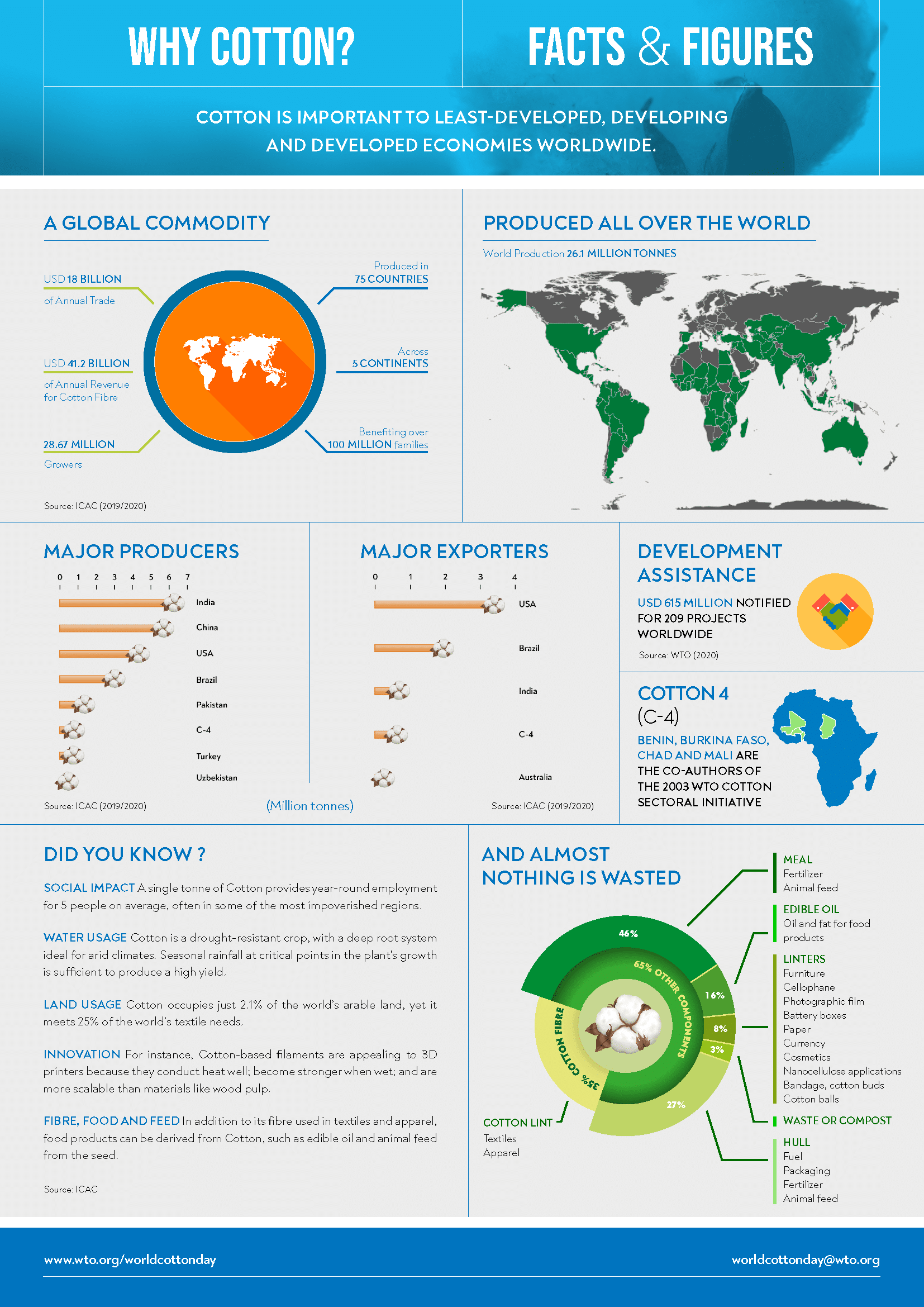
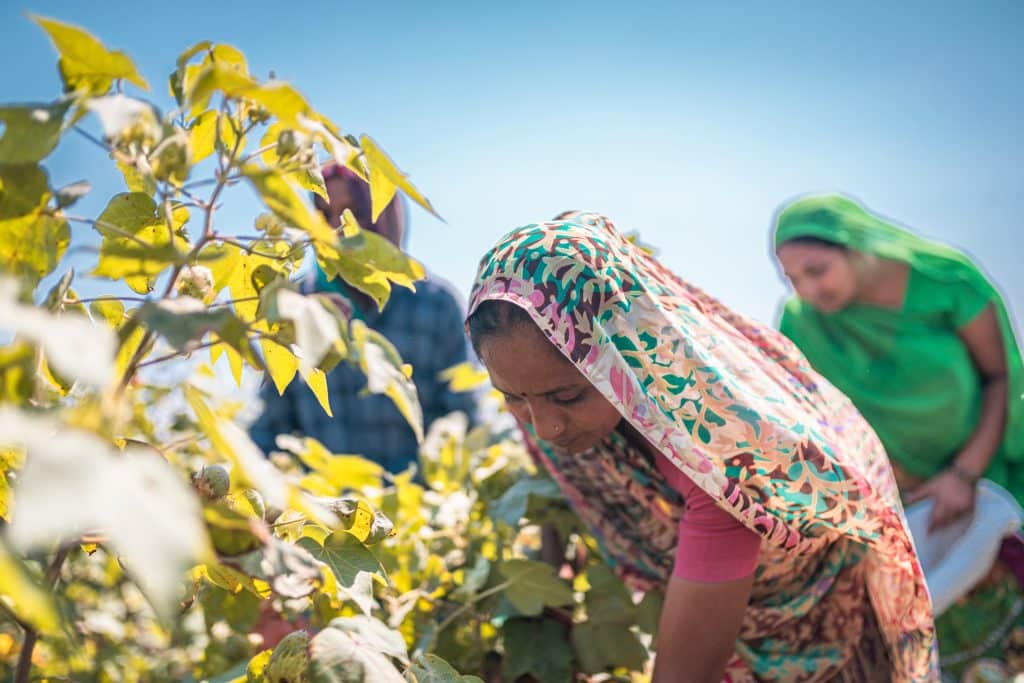

Millions of women around the world dedicate their lives to cotton production, and yet their representation and contributions aren’t fairly reflected within the sector’s hierarchies.
It’s with this in mind that Better Cotton recently launched its 2030 Impact Target for Women’s Empowerment. Over the coming years, we aim to reach one million women in cotton with programmes and resources that promote equal farm decision-making, build climate resilience, or support improved livelihoods. What’s more, we commit to ensuring that 25% of field staff are women with the power to influence sustainable cotton production.
To achieve this, we’ll collaborate closely with leading organisations to create the environment for field-level change. Here, we speak to Nisha Onta, Regional Coordinator for Asia at WOCAN, to understand the topic’s complexities and obstacles preventing women from advancing their careers in cotton. Nisha is amongst four keynote speakers at this year’s Better Cotton Conference, taking place in Amsterdam from June 21.
There are a lot of research findings which show that the major barrier for women to access training are time poverty, access to information and restrictions on mobility.
Time poverty simply means there is just not enough free time in the lives of women to add more training to their schedule. It is called the ‘triple burden’ of women. Women are responsible for productive, reproduction and communal roles. Therefore, in order to make sure we want to invite more women to train, organisers will have to provide childcare facilities, the timing of the training has to be reasonable for them and the training should address the triple burden so it is not adding to their already packed schedule of responsibilities.
Access to information is also critical, there are many instances that women are simply not aware of the availability of training or resources. Therefore, the usual mode of communication, such as sending training schedules to local representatives and news in the media might not reach the women we are trying to train. Perhaps using local women cooperatives and other mediums that are accessible to women could increase their participation.
Mobility issues can be due to cultural issues or simply the issue of infrastructure. If the training is scheduled for the evening but local safe transport is not available, for example. In some communities, women may not be allowed to travel to participate in trainings, then the organisers will have to use different strategies to convince the head of the households to give permission for the women to attend.
Ensuring that there’s capacity for women to participate in decision-making is critical to increasing their representation. If the system is not designed to include women in leadership positions, no matter how much training is available, they’ll never have equal opportunities. Therefore, a systematic rethink is required to create the space for women to participate and influence the cotton sector they contribute so much to.
Organisations like Better Cotton can be catalysts to advance gender equality in the cotton sector. Better Cotton’s vast network touches millions of farmers around the world and this infrastructure will be important to driving changes at the field-level. Better Cotton’s Women’s Empowerment Impact Target will serve an important purpose to the sector if we’re to see women afforded the chances that have historically been set aside for men.
There needs to be the space for women to voice their opinion and influence the sector’s development through decision-making positions. There has to be more direct resources such as trainings, credit and grants for women led business. These changes will inspire and impact future generations across agriculture and may also encourage the creation of more women-led businesses in the cotton value chain.
Read more

Ninety-nine percent of the world’s cotton farmers are smallholders. And whilst production capacities per farmer may be small, together, they represent the bedrock of an entire industry, enabling its global reach.
With the launch of our recent 2030 Impact Target to promote Sustainable Livelihoods, we’re committed to increasing the net income and resilience of two million cotton farmers and workers.
It’s a bold ambition and one we won’t be able to reach without the support of a vast network of partners. In this Q&A, we hear from Better Cotton Council member and Solidaridad’s Senior Policy Director for Sustainable Fashion, Tamar Hoek, about the complexity of this topic and the role Better Cotton can play in supporting smallholders.
We are glad that Better Cotton decided to include net income and resilience for farmers as one of its targets. The livelihoods of farmers and farm workers depend on the price that is paid for the cotton but also on how capable the farmer is of dealing with uncertainties in production. For Solidaridad, the topic of living income has been high on our agenda for years. With the scale that Better Cotton brings, this new target can potentially lead to a higher income for a lot of farmers around the world, which is the first step towards a living income. The target will hopefully lead to appropriate tools for increasing net income, greater awareness in the value chain, best practices and income benchmarks that are needed to eventually scale the improvements.
With the scale that Better Cotton brings, this new target can potentially lead to a higher income for a lot of farmers around the world, which is the first step towards a living income.
First of all, increasing a net income should give the farmer the opportunity to improve their livelihood, the situation of his/her family and to save for unexpected situations. Then, improvements can allow for payment of better wages and working conditions, the purchase of health and safety equipment, and perhaps investment into more sustainable pesticides and fertilisers. We all know that the price that is paid for cotton is not enough for all of these investments, both socially and environmentally. Therefore, the increase of the price – and with that the net income – is a start that will allow for a lot of improvements that are needed for more sustainable production. (Editor’s note: While Better Cotton strives for the collective improvement of sustainable livelihoods, our programmes have no direct influence over pricing or commercial activities)
Hopefully, Better Cotton will join forces with other organisations in the industry to scale the impact of the target and collectively come to a living income demand for all cotton farmers in the world. Better Cotton will need to lobby with policymakers, local governments and other stakeholders in the value chain to make sure that the right enabling environment is in place to get rid of systemic issues. Addressing structural poverty is ambitious but that will not happen overnight with just raising the net income of a group of farmers and looking at their resilience. It eventually needs a whole value chain to change and, for that, Better Cotton needs to work collaboratively.
Read more
By Alan McClay, CEO of Better Cotton

Better Cotton made significant strides in 2022 towards our vision of a world where more sustainable cotton is the norm. From the unveiling of our new and improved reporting model to a record 410 new members joining in one year, we prioritised on-the-ground change and data-driven solutions. The development of our traceability system entered a new phase with the stage set for pilots to commence, and we secured funding of over 1 million EUR to continue our work for traceable Better Cotton.
We have continued this momentum into 2023, kicking the year off with our Programme Partner Meeting in Phuket, Thailand under the twin themes of climate change and smallholder livelihoods. Our commitment to knowledge sharing continued as we collaborated with ABRAPA, the Brazilian Association of Cotton Producers, to organise an Integrated Pest Management workshop in Brazil in February, with the aim of sharing research and innovative initiatives regarding the control of pests and diseases in the cotton crop. We are committed to supporting all efforts to reduce pesticide use.
As we approach the end of the first quarter of 2023, we’ve been taking stock of the current sustainability landscape and mapping out how we can best use our resources and expertise at Better Cotton to address the challenges and opportunities on the horizon.
2023 is an important year for sustainability as a growing set of regulations and legislation are being implemented around the world. From the EU Strategy for Sustainable and Circular Textiles to the European Commission’s initiative on substantiating green claims, consumers and lawmakers have wised up to ambiguous sustainability claims like ‘zero emissions’ or ‘eco-friendly’ and are taking steps to make sure claims are verified. At Better Cotton, we welcome any legislation that supports a green and just transition and recognises all progress on impact including at field level.
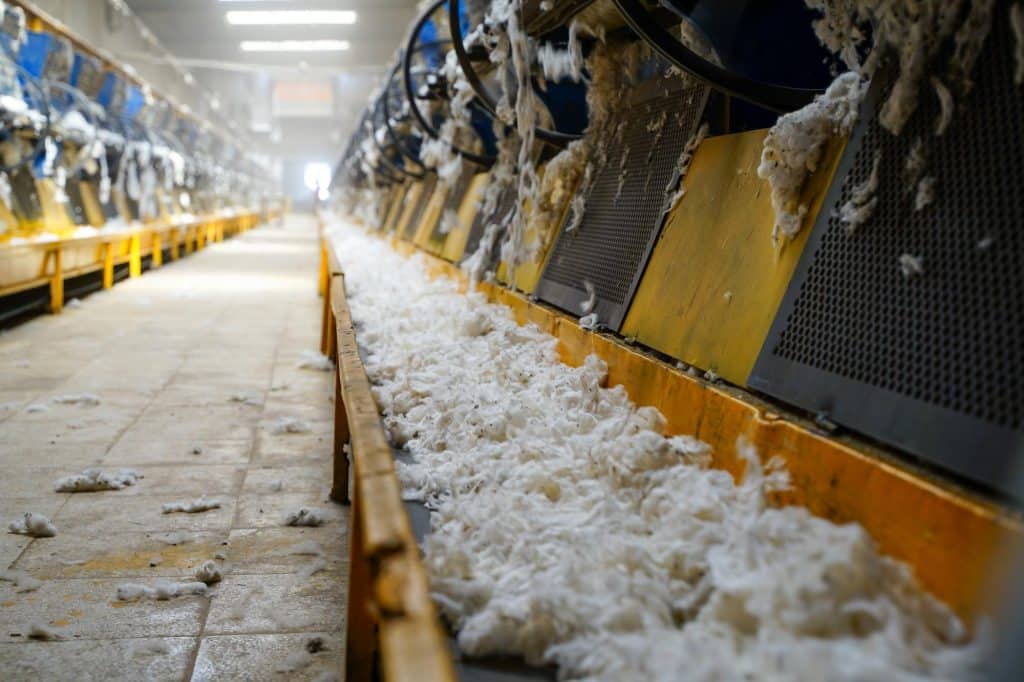
In late-2023, following our supply chain mapping efforts, we will begin to roll out Better Cotton’s global traceability system. The system includes three new Chain of Custody models to physically track Better Cotton, an enhanced digital platform to record these movements, and a new claims framework which will give members access to a new Better Cotton ‘content mark’ for their products.
Our commitment to traceability will ensure Better Cotton Farmers, and particularly smallholders, can continue to access increasingly regulated markets, and we will drive significant growth in the volume of traceable Better Cotton. Over the coming years, we plan to create additional benefits for Better Cotton Farmers including local investment by providing direct connections with retailers, brands, and customers.
In line with growing calls for evidence on sustainability claims, the European Commission has also issued new rules on corporate sustainability reporting. Most notably, the Corporate Sustainability Reporting Directive came into force on 5 January 2023. This new directive introduces stronger reporting rules for companies operating in the EU and pushes for greater standardisation in reporting methodologies.
After more than 18 months of work, we announced a new and improved approach to our external reporting model at the end of 2022. This new model tracks progress over a multi-year timeframe and integrates new farm performance indicators aligned with the Delta Framework. In 2023, we will continue to share updates on this new approach in our Data & Impact blog series.
During the first half of 2023, we will also be launching the remaining four Impact Targets connected to our 2030 Strategy, focused onpesticide use (as mentioned above), women’s empowerment, soil health and smallholder livelihoods. These four new Impact Targets join our climate change mitigation target to complete our plan to make cotton better for the farmers who produce it and for all those who have a stake in the future of the sector, as well as for the environment. These progressive new metrics will allow better measurement and drive change across five key areas to ensure greater lasting economic, environmental and social benefits at the farm level for cotton-growing communities.
For the last two years, we have been revising the Better Cotton Principles and Criteria, which lay out the global definition of Better Cotton. As part of this revision, we are going further to integrate key components of regenerative agriculture, including core regenerative practices such as maximising crop diversity and soil cover while minimising soil disturbance, as well as adding a new principle on improving livelihoods.
We are nearing the end of our review process; on 7 February 2023, the draft P&C v.3.0 was officially approved for adoption by the Better Cotton Council. The new and improved Principles and Criteria are expected to be launched in the first half of 2023, followed by a transition year, and will come into full effect in the 2024-25 cotton season.
Last but not least, in 2023 we are looking forward to once again convening industry stakeholders at the 2023 Better Cotton Conference. This year’s conference will take place in Amsterdam (and virtually) on 21 and 22 June, exploring the most salient issues and opportunities in sustainable cotton production, building on some of the topics which we’ve discussed above. We are excited to gather our community and welcome as many of our stakeholders as possible at the conference. We hope to see you there.
Read more
From 28 February to 2 March 2023, Better Cotton held a workshop in collaboration with ABRAPA, the Brazilian Association of Cotton Producers on Integrated Pest Management (IPM). IPM is an ecosystem approach to crop protection that combines different management practices into a strategy for growing healthy crops.
Taking place in Brasilia, the workshop brought together a range of international experts, with presentations and discussions on the latest research and best practices. It also included a field trip to a farm to look at the different ways pest management is executed on a large-scale farming system, including both the successes and challenges.
During the workshop, we sat down with Dr Peter Ellsworth, Professor of Entomology and Extension IPM Specialist at the University of Arizona and Dr Paul Grundy, Technical Lead for IPM at CottonInfo in Australia to talk about their experiences and expertise in IPM.
Dr Peter Ellsworth: In terms of what most people think, it just means a biologically derived pesticide. A pesticide is just something that kills a pest. What a lot of people don’t understand is that a pest is only an organism out of place or out of time. So that could be a weed, it could be a virus, a bacterium, an insect or a mite.
Dr Paul Grundy: I’d describe it as a pathogenic organism that you can spray for the control of a pest. It will be either a virus, fungus or a bacterium. A key advantage is that many biopesticides have a narrow target range and can work well within an IPM program.
Dr Peter Ellsworth: When it comes to natural enemies and beneficials, there’s a little nuance there. A natural enemy would be usually some arthropod that feeds on other arthropods, but it could include the pathogens that naturally kill our insects. A beneficial includes all natural enemies, but also includes our pollinators and other organisms that have value in our system.
Dr Paul Grundy: Cultural controls are a range of things. It could be something as simple as an agreed sowing or crop end date. Essentially, it can be anything that entails a crop management tactic that disadvantages a pest.
Dr Peter Ellsworth: Sure – it’s just counting! But it’s about knowing where to count. In the case of Bemisia whiteflies, you have an animal that can colonise any part of the plant. It can be anywhere on any of the hundreds of leaves on the plant. So, years ago, we did studies to figure out exactly which leaf is most representative of the overall distribution of whitefly adults on the plant. Then we did the same thing for the eggs and nymphs.
Basically, the method is about counting down to the fifth leaf from the top of the plant, turning it over, and when there are three or more adult whiteflies on this leaf, classifying it as ‘infested.’ You also count large nymphs – you detach the leaf, turn it over and you look at a disc the size of a US quarter, using magnifying loupes that we have outfitted with a properly sized template, and if there’s one nymph in that area it’s infested. You tally these two counts up, and when you have a certain number of infested leaves and infested leaf discs, you know if it’s time to spray.
Dr Paul Grundy: Conceptually, it’s the same thing. Pest management is a people business, so the principles for IPM are just as applicable on a small scale as they are on a large scale. There are obviously different logistical scales associated, but the principles are very similar.
Dr Peter Ellsworth: Yeah, the principles I would say are identical. But there are a couple of notable things that change what a smallholder can do. One of them is area-wide factors. Unless the smallholder is terribly well connected with their community and many, many other smallholders cooperate, they don’t have the ecological landscape engineering opportunities that Mato Grosso has. Large farms can do very specific things around isolation, crop placement and timing and sequencing that a smallholder just wouldn’t be able to take advantage of. These area-wide approaches represent important prevention or avoidance tactics that reduce pest pressures on your cotton crop.
The other thing is the hazards. It depends on the smallholder, but for the most part, some of the safety procedures and equipment aren’t necessarily available there, so the stakes are so much higher.
Dr Peter Ellsworth: There’s no reason for IPM without people because we define what a pest is. I always say no bug was born to be bad, we make it bad. We place value on specific things in our world, whether that’s agricultural production, or having a mosquito-free home, or running a non-rat-infested restaurant.
Dr Paul Grundy: From a technology and research perspective, we use data to understand and describe what’s going on and to determine whether what we’re putting in place is successful or otherwise. So, if we look at pesticide use data and then we look at pest resistance testing data, often you can match those to data sets up to understand on-farm changes. Typically, a change in resistance will more than reflect a change in chemical use patterns, which is why it’s important to have that on-farm data. We have a saying in Australia which is “If you can’t measure it, you can’t manage it”.
Dr Paul Grundy: I’ve learned a lot from international collaboration. For example, in preparation for the possibility that Begomoviruses might enter Australia following the spread of its vector, the silver leaf whitefly in the mid-2000’s, we assembled a team that went to Pakistan to learn what we could from those with experience and form connections with people who we would be able to talk to should this problem emerge in Australia. That since came around full circle through Better Cotton – with my subsequent involvement with Pakistan researchers who have wanted to learn from us how to better implement IPM. The exchange of information is always valuable in both directions.
Dr Peter Ellsworth: I’ve worked a lot in northern Mexico. Sometimes people say, “You’re in US cotton, why are you helping Mexican growers?” I say that they’re our neighbours and any problem they have could be ours. They jointly eradicated boll weevil and pink bollworm with us, for example. They’re important partners in business and in everything.
Some people asked the same question about why I’m coming to Brazil, but I don’t look at the cotton industry in terms of competitors. I do think as an industry worldwide, there are many more ties that bind than separate.
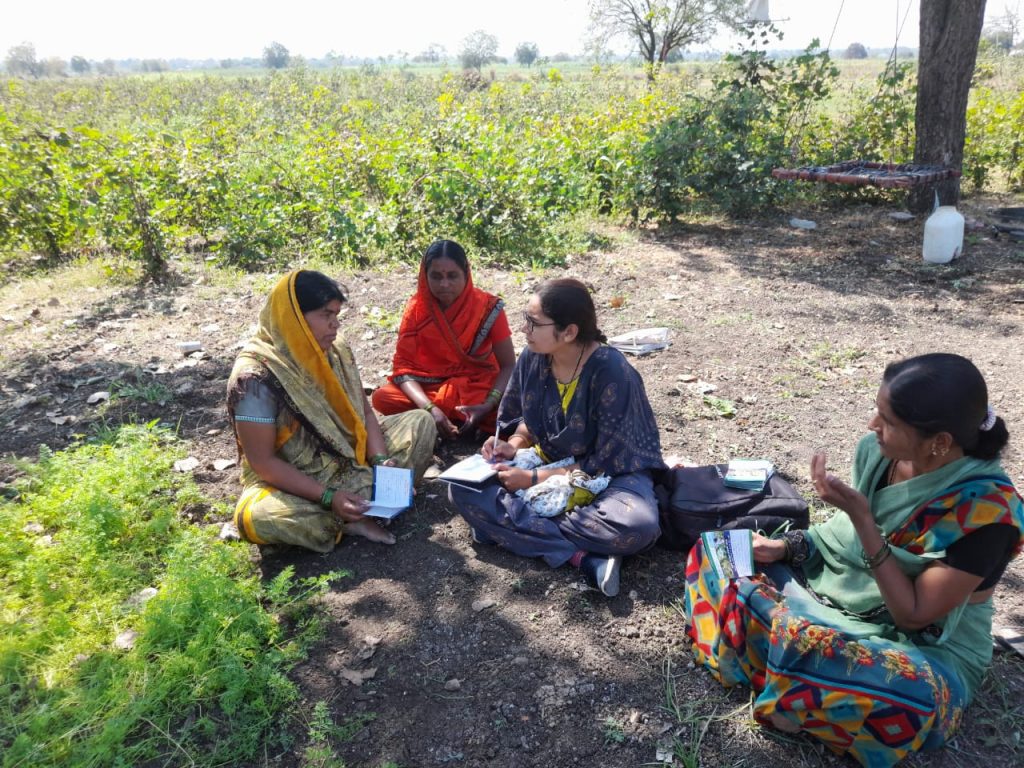
While women play a pivotal role in the cotton sector across the world, they are frequently held back by many forms of discrimination, leading to underrepresentation in decision-making, lower wages, less access to resources, limited mobility, increased threats of violence and other serious challenges.
Gender discrimination is a key issue in the cotton sector, which is why ensuring that all workers enjoy decent working conditions, with fair pay and equal opportunities for learning and progression, is a top priority for Better Cotton, laid out in our Principles and Criteria.
This year, in recognition of International Women’s Day, we want to celebrate those building workplaces where women can thrive. In order to do so, we spoke with Manisha Giri, a Producer Unit Manager (PUM) from India. Manisha has been driving change through her Farmer Producer Organisation (FPO), an organisation that helps members to save costs, achieve fairer prices for their cotton, and develop new ways to boost their income. We sat down with her to learn about her experiences.
My name is Manisha Giri, I am 28 years old, and I live in Palodi, a village in the Indian state of Maharashtra. I have been working as a PUM with Better Cotton since 2021, having completed a BSc in Agriculture at the VNMKV University in Parbhani.
As a PUM, my responsibilities include planning, data monitoring, and solving challenges faced by Field Facilitators (FFs). I have oversight on FF training sessions, which are provided to both cotton farmers and cotton workers. I also cross-check with farmers and workers whether minimum wages are being duly paid, whether workers are being forced to work by farmers, whether they are facing any sort of discrimination, and whether there is any pay parity based on gender.
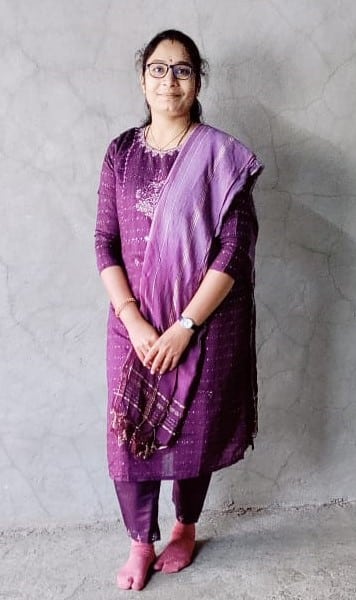
When I joined, I wasn’t confident, I was always nervous and I questioned myself, as it is a big project. To help me, the Programme Partner team constantly gave examples of the many female Better Cotton staff members in the India team in order to motivate me. They always said that once women are determined to do something, they end up achieving it. When I see women around me fulfilling their personal responsibilities whilst working at a high level, it really motivates me.
Getting women together and starting a FPO with them is something I am very proud of. This was a big achievement for me, as gathering women for training and collective action in villages is very difficult. Sometimes, even though the woman wants to participate, their families or husbands don’t allow them.
We realised that organic carbon in our area was fast depleting and farmers had no livestock anymore, so we zeroed in on making compost for farmers in the FPO. We decided to start with vermicomposting, allowing us to promote sustainable agriculture. Now, 300 female Better Cotton farmers are working with the FPO, and we have reached a point where the demand is so high that we are falling short of vermi beds.
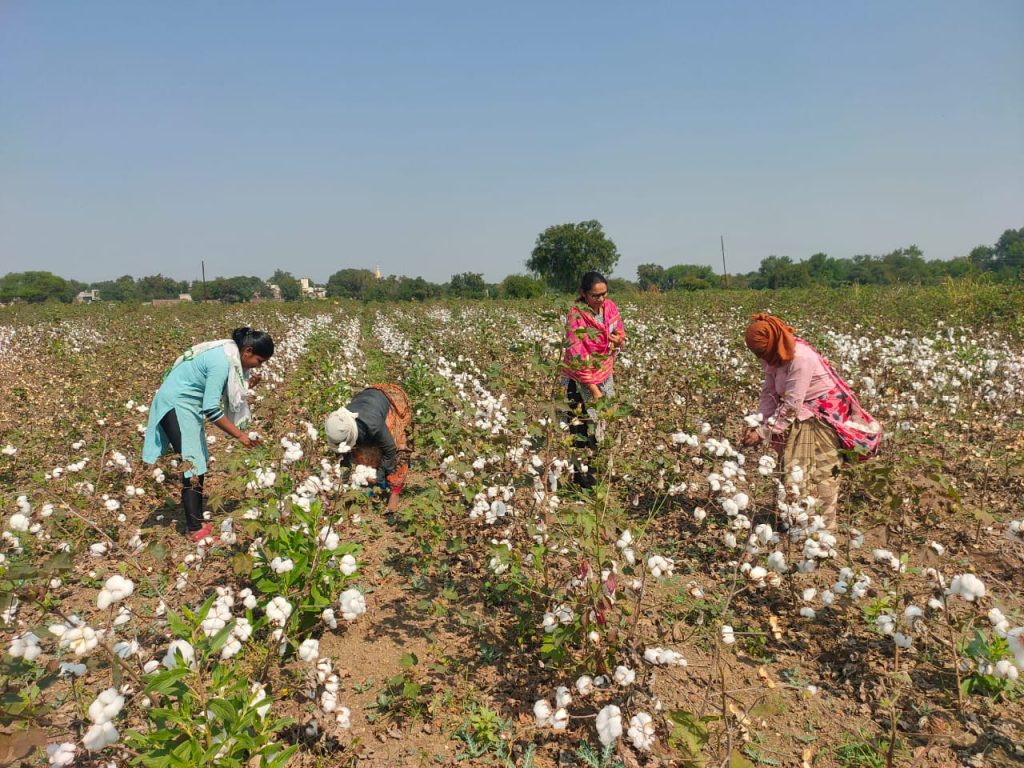
As a working woman, I have my own identity even though when I am back home, I continue to take care of my family. I want women to go beyond being recognised as someone’s wife – perhaps eventually men will be recognised as someone’s husband.
With the entrepreneurial training sessions that are being conducted, I had set myself a target of getting 32 entrepreneurs trained, and setting up five businesses. However, I have already achieved my three-year target in one year, setting up 30 businesses.
In the next ten years, I expect that people will use exclusively vermicompost, and we will contribute to slowing down climate change. Due to the decreased use of chemical pesticides and increased use of biopesticides, farmers will get increased yield with less expenditure.
I predict that we will have more female staff, and I envision women playing an integral part in decision-making. Women will come to us with ideas to expand their businesses, and they will become independent entrepreneurs.

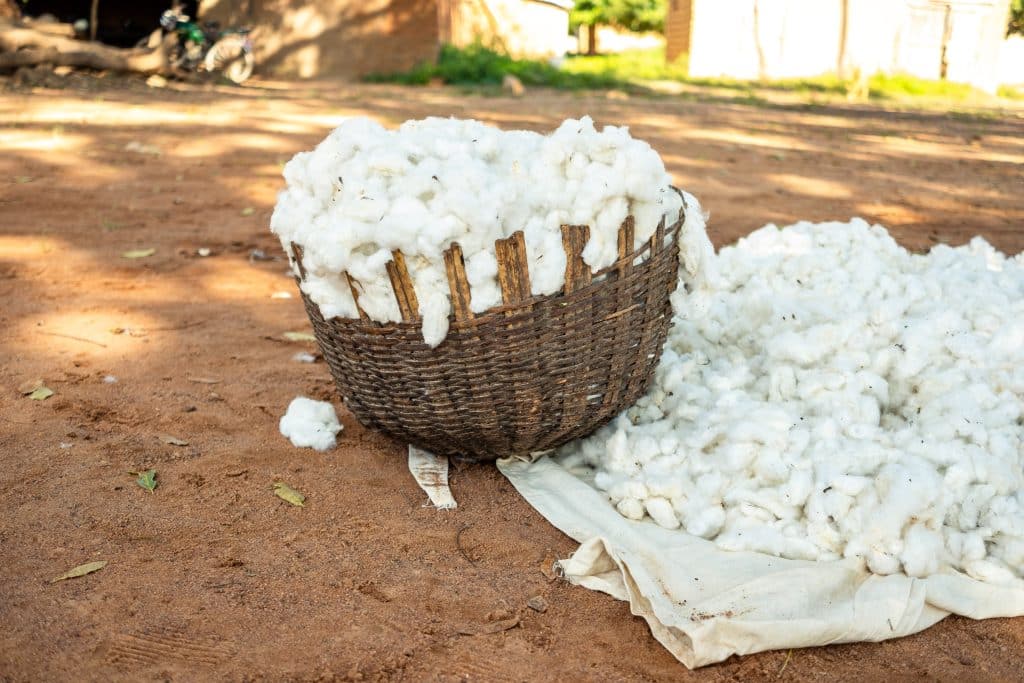
Despite a challenging economic environment, Better Cotton saw a significant increase in support in 2022 as it welcomed 410 new members, a record for Better Cotton. Today, Better Cotton is proud to count more than 2,500 members representing the entire cotton sector as part of our community.
74 of the 410 new members are Retailer and Brand Members, who play a vital role in creating demand for more sustainable cotton. The new Retailer and Brand Members come from 22 countries – such as Poland, Greece, South Korea, Thailand, the United Arab Emirates and more – highlighting the organisation’s global reach and the demand for change across the cotton sector. In 2022, the Better Cotton sourced by 307 Retailer and Brand Members represented 10.5% of world cotton, demonstrating the relevance of the Better Cotton approach to systemic change.
We are delighted to have 410 new members joining Better Cotton during 2022, showing recognition of the importance of Better Cotton’s approach to achieving transformation in the sector. These new members demonstrate their support for our efforts and commitment to our mission.
Members fall within five key categories: civil society, producer organisations, suppliers and manufacturers, retailers and brands and associate members. No matter the category, members are aligned on the benefits of sustainable farming and are committed to the Better Cotton vision of a world where more sustainable cotton is the norm and farming communities thrive.
Below, read what a few of these new members think about joining Better Cotton:

Through our social purpose platform, Mission Every One, Macy’s, Inc. is committed to creating a more equitable and sustainable future for all. Better Cotton’s mission of promoting better standards and practices within the cotton industry is integral to our goal of achieving 100% preferred materials in our private brands by 2030.

JCPenney is firmly committed to providing high-quality, affordable and responsibly sourced products for our customers. As a proud member of Better Cotton, we hope to drive industry-wide sustainable practices that improve lives and livelihoods around the world and further our mission of serving America’s diverse, working families. Our partnership with Better Cotton will better enable us to meet our customers’ expectations and deliver on our sustainable fiber goals.

Joining Better Cotton was important to Officeworks to promote responsible sourcing and help transform the global cotton industry, both from a human rights and an environmental perspective. As part of our People and Planet Positive 2025 commitments, we are committed to sourcing goods and services in more sustainable and responsible ways, including sourcing 100% of our cotton as Better Cotton, organic cotton, Australian cotton or recycled cotton for our Officeworks private label products by 2025.

As part of our All Blue sustainability strategy, we aim to expand our sustainable product collection and reduce our greenhouse gas emissions. At Mavi, we prioritise not harming nature during production and ensuring that all of our All Blue design choices are sustainable. Our Better Cotton membership will help to raise awareness among our customers and within our own ecosystem. Better Cotton, with its social and environmental benefits, is included in Mavi’s definition of sustainable cotton and supports Mavi’s sustainability goals.
Learn more about Better Cotton Membership.
Interested in becoming a member? Apply on our website or get in touch with our team at [email protected].
Read more